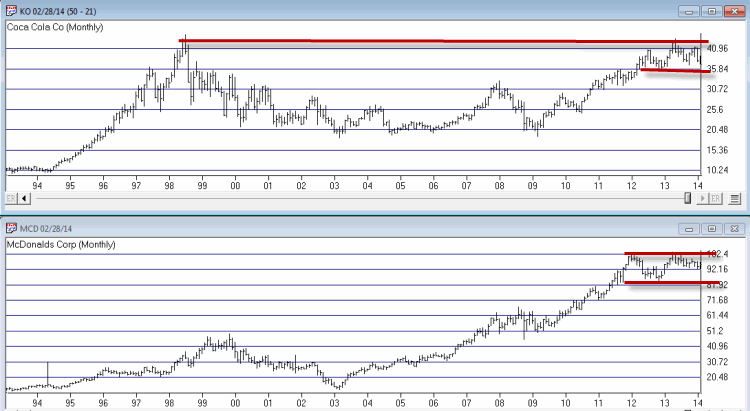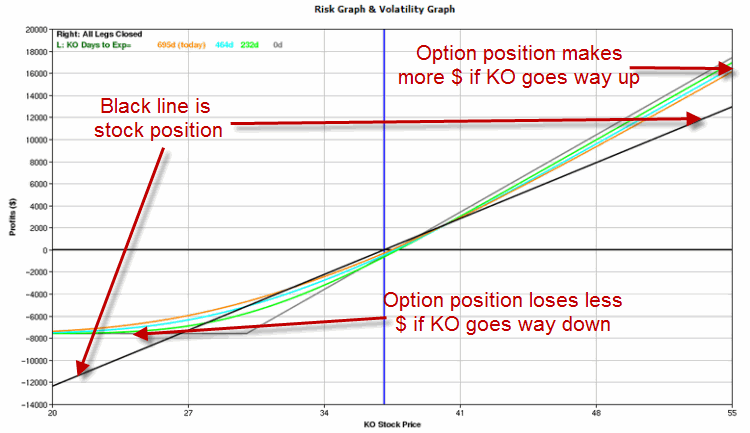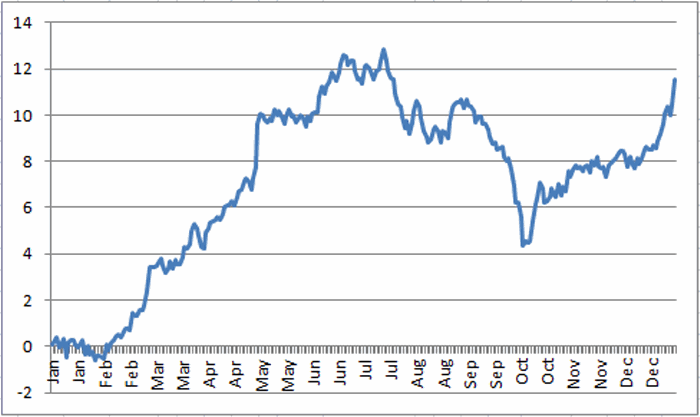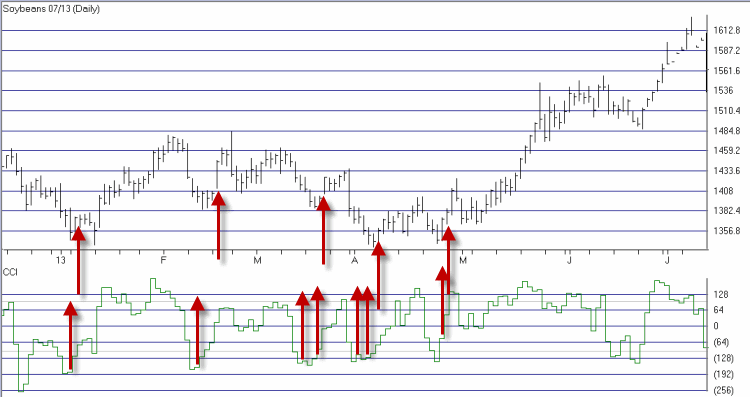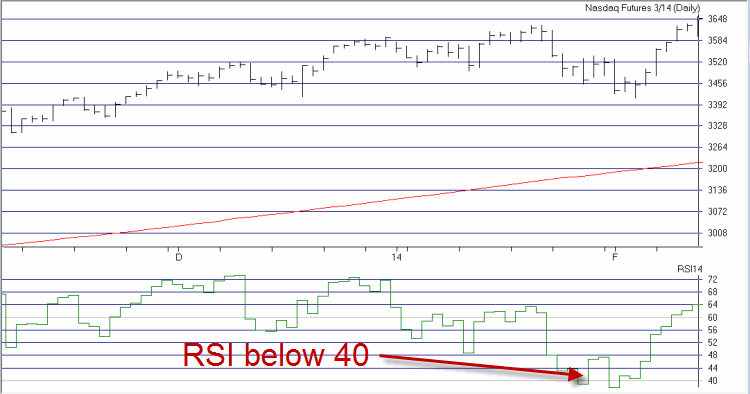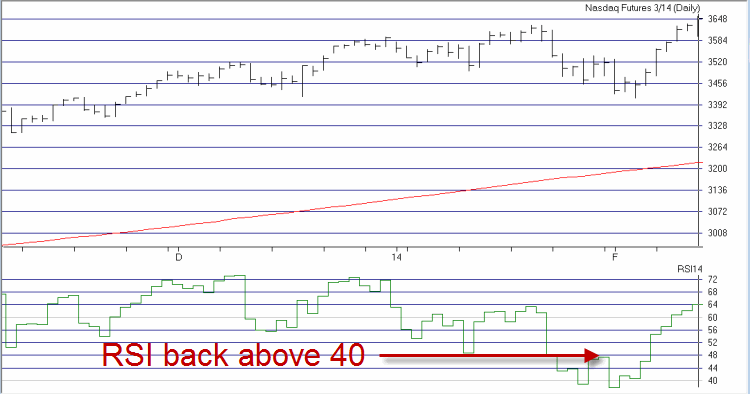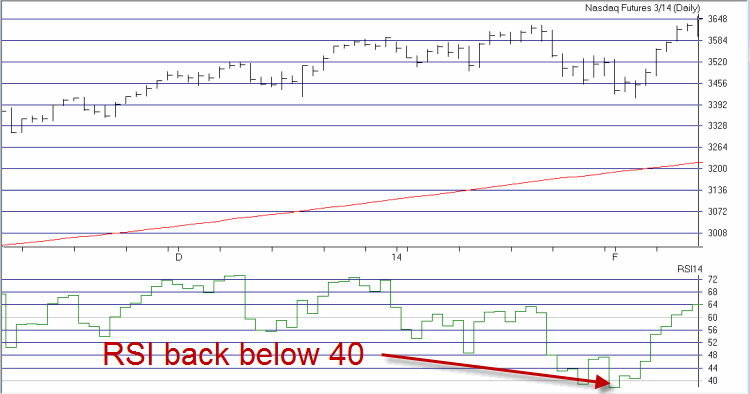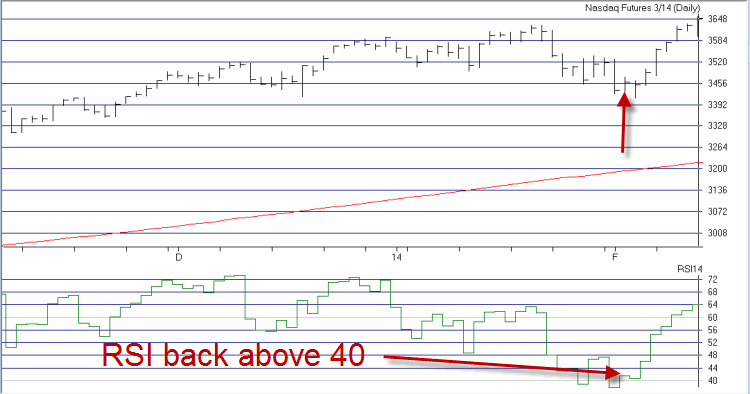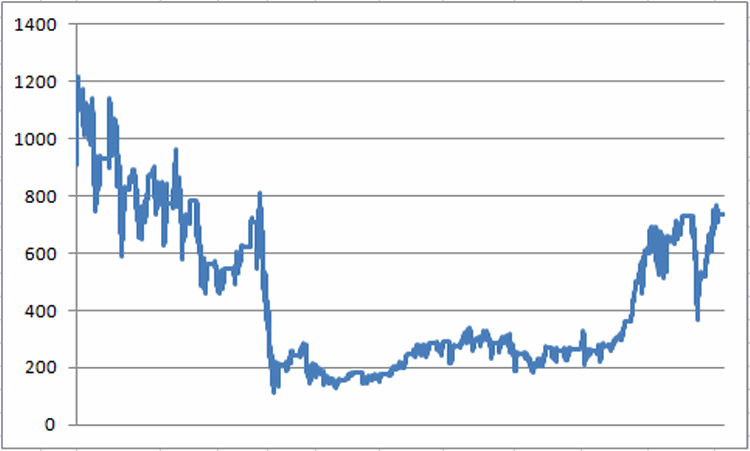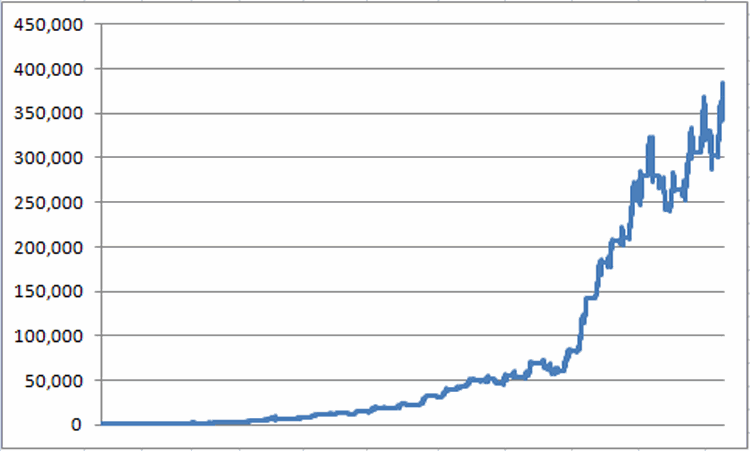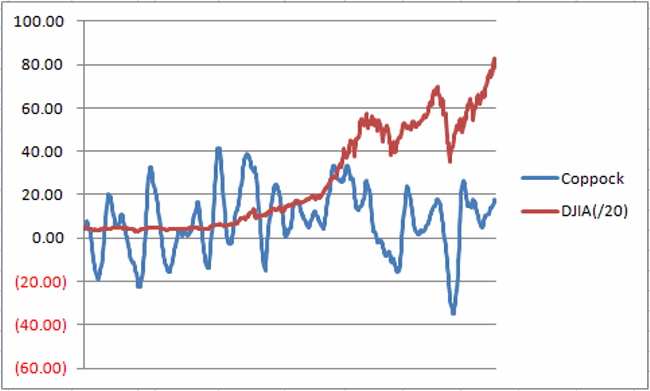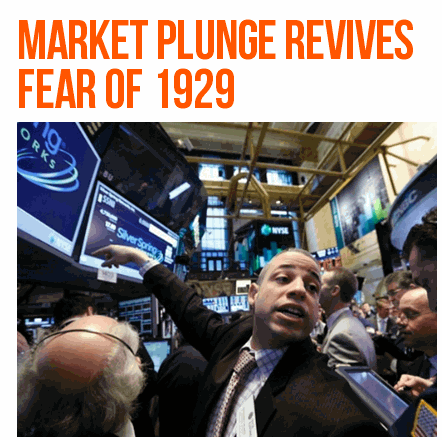Sometimes you can just tell when something is going to turn around? Like for instance, when I write an article about a trend that has been playing out time and time again over a several year period – that can pretty much be counted on to put an end to that trend (sorry for the paranoia, but as far as the markets go, it’s a “learned response”).
So with that word of warning in place, here goes.
The ETF ticker VXX is intended to track the widely followed VIX Index. And it does in a sense, expect that really it doesn’t. To better understand that seeming bit of gibberish simply glance at Figure 1. In the top clip you see the actual VIX Index. In the bottom clip you see the price action for ticker VXX. 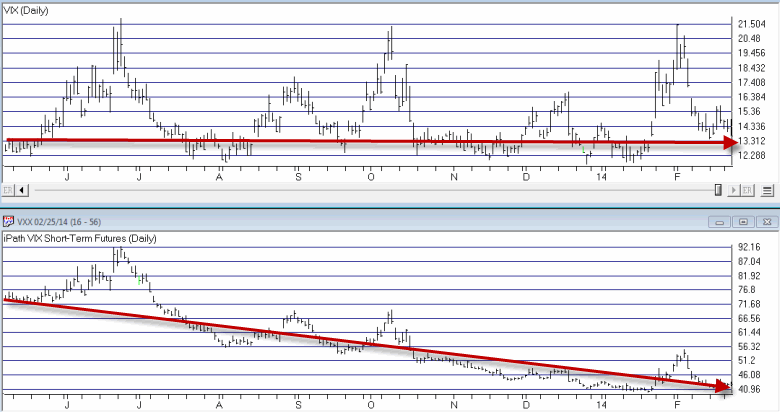 Figure 1 – VIX Index versus the ETF Ticker VXX (Courtesy: AIQ TradingExpert)
Figure 1 – VIX Index versus the ETF Ticker VXX (Courtesy: AIQ TradingExpert)
Notice any difference? While VIX has been trending sideways for some time now, VXX has been in a steady decline for several years – with a series of upward “spikes” along the way. Now the reason for this is something known as “Contango” and has to do with the fact that ticker VXX holds futures contracts and the prices for the further out months is generally always higher than the nearer months, blah, blah, blah. Forgive my laziness, but for those with intellectual curiosity regarding contango may I suggest the following link:
www.google.com Then type in the word contango.
And don’t even get me started on “backwardation.”
As with any persistent trend that I might find in the markets, as a proud graduate of “The School of Whatever Works”, my interest – in all candor – is not so much in asking “Why”, but rather, “How Often” and “How Consistently.” So how does one take advantage of the downward bias built into VXX? Well, there are lot’s possibilities, but let’s look at one specific approach.
Whacking The VXX Mole
Basically the “theory” is that over the long run the downward bias in VXX will persist (with inevitable periods of strength). So the idea is simply that every time VXX “pops it’s head up”, we whack it and play the downside. The best way to do this – in my opinion – is with put options on VXX. The alternative is to sell short shares of VXX, but that involves unlimited risk, and potentially a lot of it – if something unexpectedly bad happens that affects the stock market, VXX is capable of shooting a great deal higher in a short period of time. Buying a put option on VXX at least insures limited risk.
One Way to Identify “Clobberin’ Time”
Just to make things needlessly complicated I am going to use something called “RSIAll”. RSIAll is simply the simple average of the 2-day RSI, the 3-day RSI and the 4-day RSI for ticker VXX. This indicator appears in the bottom clip in Figure 2.
So the play is simply this:
-When RSIAll rises to 80 or above (or some other value of your choosing)
-Look to sell short (i.e., buy put options on) VXX when it takes out the low of the previous two trading days.
Figure 2 displays several examples.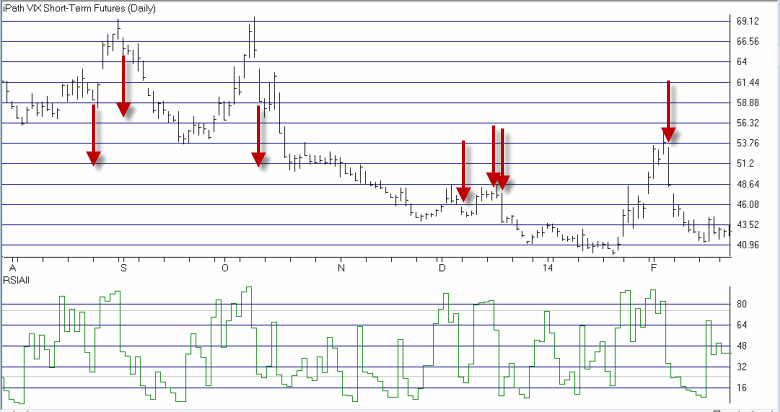 Figure 2 – Ticker VXX with several “Whack a VXX” opportunities highlighted (Courtesy: AIQ TradingExpert)
Figure 2 – Ticker VXX with several “Whack a VXX” opportunities highlighted (Courtesy: AIQ TradingExpert)
The other “key” is deciding when to get out. I am not going to address specifics in this article but there are many possibilities:
*First profitable close
*x-day RSI drops below y
*Some other indicator reaches oversold levels
*Etc.
Which Option to Buy
As far as which specific put option to buy, I am going to go with the “there is not necessarily one best option to trade” answer. Different traders have different levels of aggressiveness and risk tolerance when it comes to choosing trades. In general the shorter-term the option the greater the potential if you are exactly correct in your timing, but the more quickly you can lose money if the VXX goes sideways to higher for a while. So as a rule of thumb I would say it is better to consider options with a minimum of 30 days left until expiration. Beyond that, the basic choices are:
1) The lowest “Percent to Double”: This calculation measures how far the underlying must move in order for the option to double in price. This typically involves buying out-of-the-money options and is considered more of a “high risk, high reward” choice compared to the other choices that follow.
2) The highest “Gamma”: For people who don’t know the option “Greeks”, it can be boiled down pretty simply. “Delta” tells you how much the option should move if the underlying moves $1 in price. So a “Delta” of 50 means that if the underlying security moves $1 in price the option will move (roughly) fifty cents.
“Gamma” tell you how much the “Delta” will change if the underlying moves $1 in price. In more general terms “Gamma” can guide you to options with the most immediate “bang for the buck.”
3) Deep-in-the-money puts: This choice offers the least leverage but also limits the negative effect of time decay (because there simply isn’t much time premium built into the option price) and can start making money point-for-point with the underlying fairly quickly. 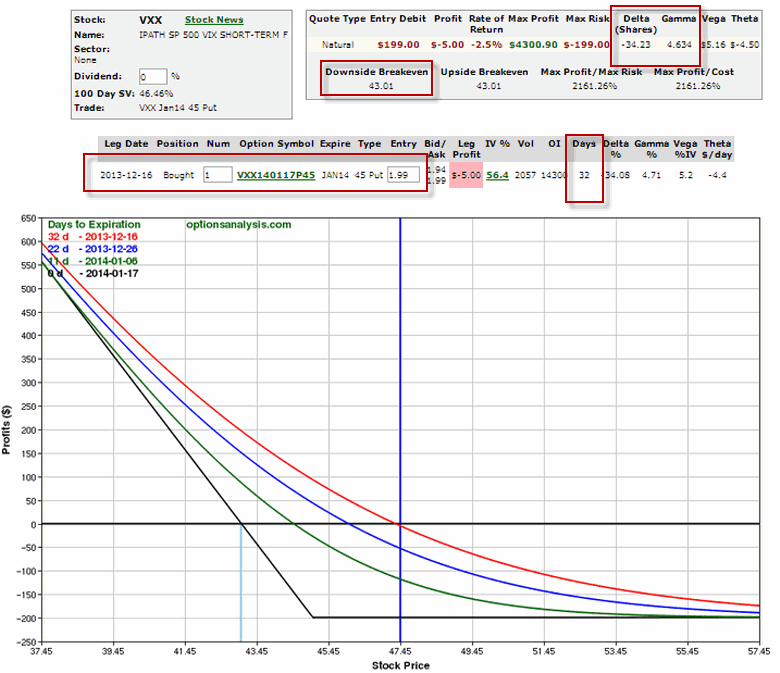 Figure 3 – Lowest % to double put trade (Courtesy: www.OptionsAnalysis.com)
Figure 3 – Lowest % to double put trade (Courtesy: www.OptionsAnalysis.com)
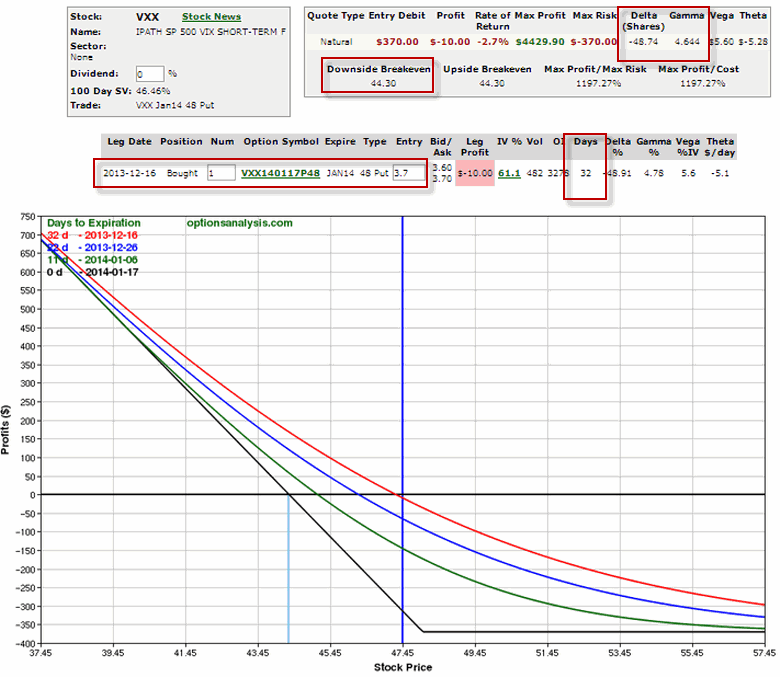 Figure 4 – Highest Gamma put trade (Courtesy: www.OptionsAnalysis.com)
Figure 4 – Highest Gamma put trade (Courtesy: www.OptionsAnalysis.com)
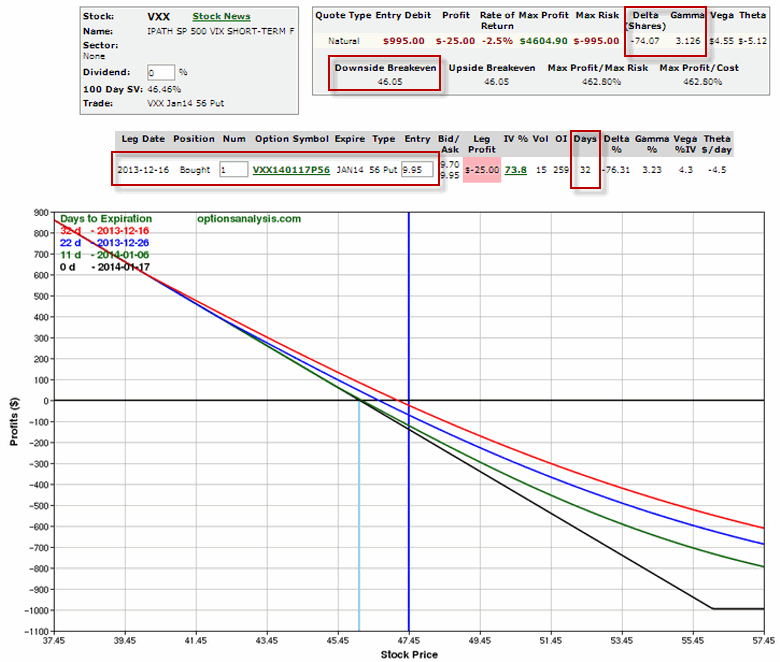 Figure 5 – Deep-in-the-money put trade (Courtesy: www.OptionsAnalysis.com)
Figure 5 – Deep-in-the-money put trade (Courtesy: www.OptionsAnalysis.com)
Summary
Now that I have planted the idea that playing the short side of VXX is a good idea I would not be surprised to see some unforeseen event cause volatility to trend sharply higher in the not too distant future. But remember, the purpose of this article is not to compel you to “take the next trade”, but to identify and consider opportunities that may occur on a fairly consistent basis into the future.
Jay Kaeppel
